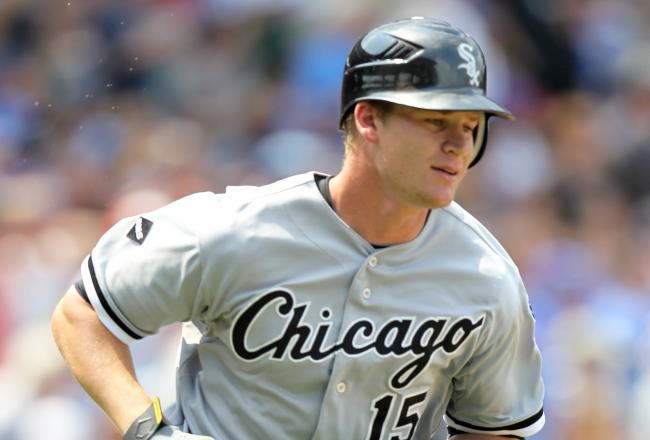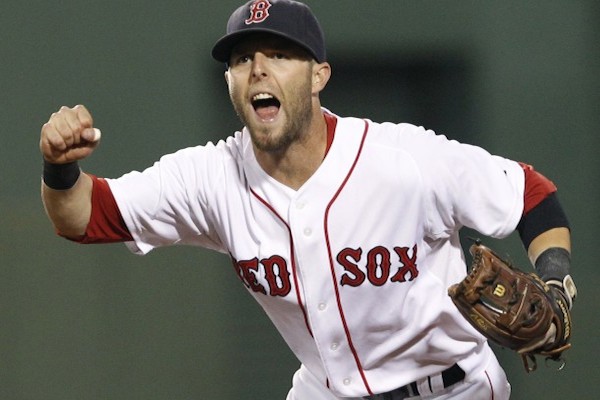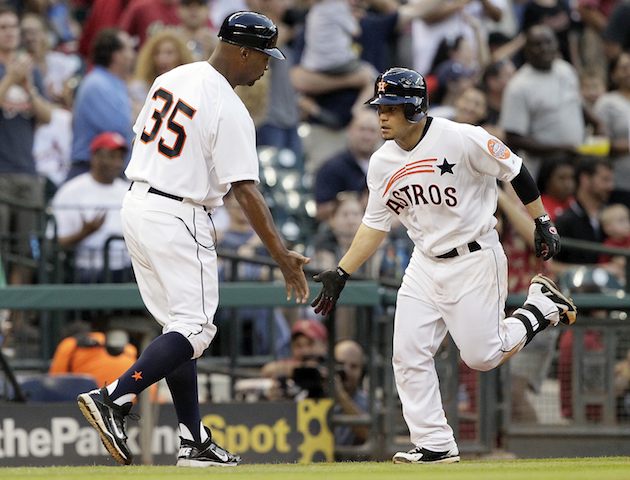A Look Back at the 2013 Draft: AL Second Basemen

There is no dirtier word in sports than potential. Paul Bear Bryant once said that “potential means they ain’t done nothing yet.” That may well be true, but a fantasy baseball player ignores potential at their own peril. Admittedly, a part of potential means looking back beyond the last season, but it also means looking at scouting reports and minor league numbers to guess what a young player may do in the future. When looking at the AL crop of second basemen, we have to keep potential in mind.
A Twitter follower asked a loaded question when she asked who should be dropped between Neil Walker, Dustin Ackley, and Daniel Murphy. Understanding the various levels of this question requires an understanding in potential. If we were going based purely on performance then Dustin Ackley would be the easy choice. He performed horribly last season and is off to another sluggish start. Yet, he was the number two overall pick for a reason and while high draft choices can often bust, we have to assume there is something there before we classify him as such. This doesn’t even mention his 2011 performance.
[am4show have=’p4;p7;p3;’ user_error=’Front Office’ ]
- . . . . . . . . . . . .AVG. . . .OBP. . . .SLG. . . .PA
- 2011 . . . . . . ..273. . . ..348. . . .417. . ..376
- 2012. . . . . . ..226. . . . .294. . . .328. . ..668
It is obvious that the 2011 numbers still have more of an impact on where Ackley is selected than his numbers last season. If we were going on those numbers he likely wouldn’t be selected at all. The prospect of having a mid 700s OPS second basemen with good speed is enough to make anyone overlook 2012. The question is whether it is more likely that Ackley permeanently regressed or whether he will climb back to those previous numbers. Before we answer that question, let’s look at the whole list of guys.
|
Owned |
TAV |
BR |
RC |
|
| Robinson Cano |
99 |
.318 |
40.4 |
119 |
| Ian Kinsler |
98 |
.255 |
-1.1 |
89 |
| Dustin Pedroia |
98 |
.281 |
9.3 |
88 |
| Ben Zobrist |
98 |
.315 |
28.7 |
98 |
| Jason Kipnis |
92 |
.264 |
0.7 |
77 |
| Jose Altuve |
92 |
.269 |
2.7 |
79 |
| Howie Kendrick |
70 |
.265 |
1.2 |
63 |
| Emilio Bonifacio |
44 |
.239 |
-6.9 |
29 |
| Dustin Ackley |
33 |
.241 |
-19.2 |
60 |
| Omar Infante |
27 |
.255 |
-5.3 |
69 |
| Kelly Johnson |
7 |
.248 |
-9.6 |
60 |
| Maicer Izturis |
5 |
.230 |
-6.8 |
35 |
| Gordon Beckham |
4 |
.248 |
-14.4 |
56 |
| Chris Getz |
3 |
.240 |
-4.3 |
31 |
| Jamey Carroll |
2 |
.248 |
-7.8 |
53 |
| Jemile Weeks |
1 |
.234 |
-16.1 |
43 |
| Brian Dozier |
1 |
.229 |
-14.4 |
26 |
| Median |
—- |
.248 |
-6.1 |
60 |
When we look at the National League list later on, it will appear as if they have the upperhand, but there are a number of “potential” guys on this list that could make it look a lot better. Jose Altuve and Jason Kipnis both got off to very good starts in 2012 only to fade down the stretch. Throw in intriguing speed guys like Emilio Bonifacio and Jemile Weeks and the list could end up looking very good. The problem is that the “potential” game has a soft underbelly that suck you in like a black hole.
Enter Gordon Beckham. Beckham was the eighth overall selection in the 2008 draft and made it up to the majors towards the midway mark of the 2009 season. He sported an .808 OPS with 14 home runs despite playing in only 103 games that season. In every year since, people have been drafting Beckham in the hopes that that guy will return. 2010 saw his best OPS since that rookie season with a .695 mark. He seems to be getting worse every season and the percentages of fans drafting him has dwindled to the four percent you see above. Some people use words like promise when describing younger players, but using that word implies its true meaning: a promise. Gordon Beckham is a reminder that youth and potential is hardly a promise of anything.
One percent of the Yahoo universe owns Jemile Weeks in spite of the fact that he isn’t even at the major league level. That comes from his 2011 numbers. He hit a robust .303 and stole more than 20 bases despite not being called until the kids were out of school. At this point, he’ll be lucky to get the call again. So, forgive my skepticism when evaluating the potential of young players. For every Mike Trout and Bryce Harper, there are over a dozen Gordon Beckhams. Fantasty players can win their fantasty leagues if they finger the right prospect earlier than his or her opponents. Too many torpedo their chances by jumping on the bandwagon too soon for the flavor of the month.
Those playing in mixed leagues may think their pickings are slim, but we have to remember we are looking at only half the population. The other half has plenty of guys that are better than the league average. Even if we only double the output, we have twelve guys over the league average .260 mark in total average, twelve guys over the average zero in batter runs and 20 guys over the 60 runs created mark. There was still plenty to be chosen on draft day. Often the key to the fantasy season is choosing that second guy to complement your starter.
Players could use that opportunity to guess on the potential we talked about earlier or they could try for the lefty/righty platoon situation we discussed in the platoon advantage series. Most players would simply pick the best guy on the board. This second base crop is unique in that it has guys (Jamey Carroll, Maicer Izturis, Emilio Bonifacio, and Ben Zobrist) that are eligible at multiple positions. That always helps. Furthermore, there are guys that are officially listed somewhere else that have second base eligibility. So, the second base crop is not as bad as it might seem.
[/am4show]




